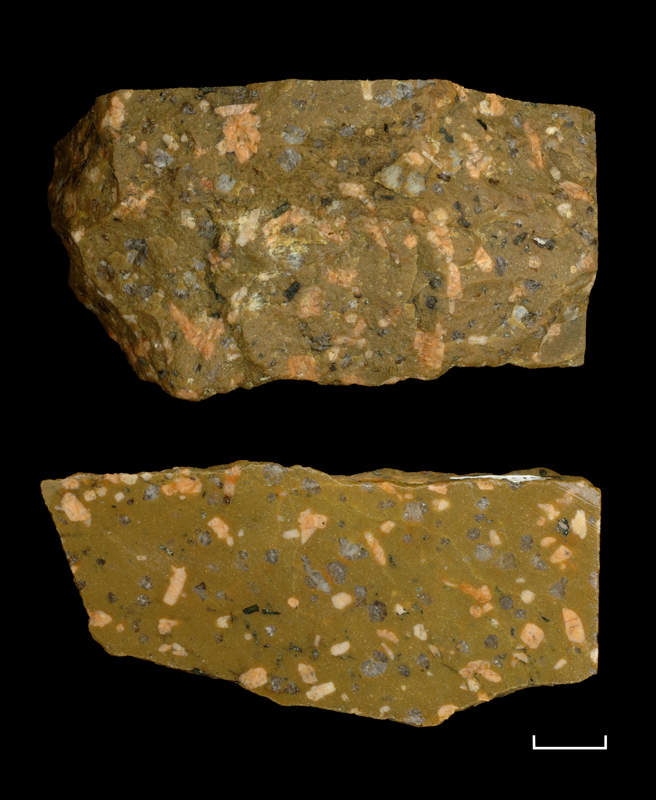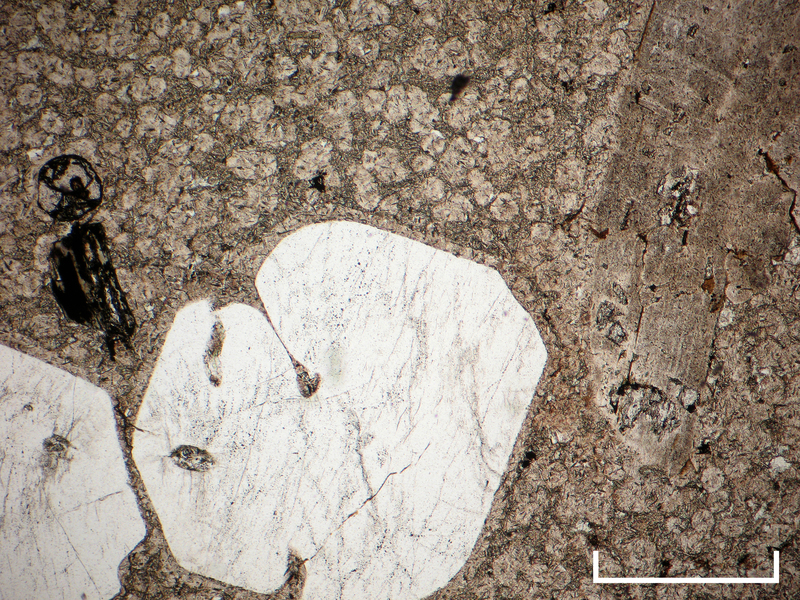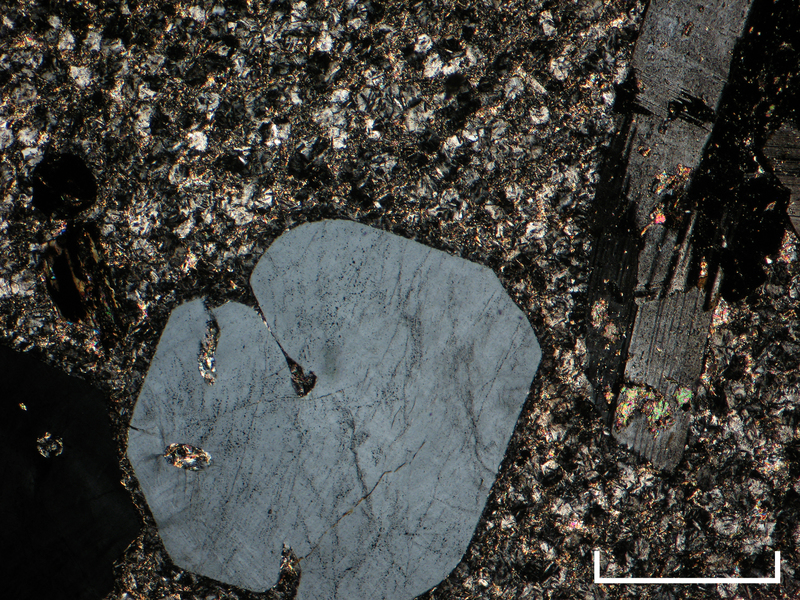- Home
- Rocks
- Type fossils
- Fossil Specimens
- Minerals
- Glossary
- Stratigraphic Chart
- Michel-Levy Chart
- Classification of igneous rocks
- University of Cambridge
- Department of Earth Sciences
- ESC Library
- Moodle
- Sedgwick Museum
- DoITPoMS
- Mindat.org
- Microfossils
- Bryozoans
- Webmineral
- Tree of Life
- CrystalMaker
- Virtual Microscope
L110 Rhyolite, porphyritic (quartz porphyry)
Title
L110
Rhyolite, porphyritic (quartz porphyry)
Subject
Age
Ordovician
Location
Armboth Dyke
Thirlmere, Cumbria
Description
Hand Specimen
Pink-brown, porphyritic rock with a very fine-grained groundmass.
Abundant pink macrocrysts (5-10 mm).
Phenocrysts of feldspar (2-4 mm) and quartz (2-4 mm).
Accessory black mineral.
Thin-section
Quartz
- Rounded phenocrysts (1-4 mm) with embayments/cavities and tiny inclusions.
Feldspar
- Phenocrysts ~2mm, subhedral. Mainly alkali feldspar, some plagioclase. Alteration to white mica.
Garnet
- Very rare, euhedral phenocrysts (0.5-1 mm). Isotropic, high relief, colourless to pale pink.
Biotite
- Very rare fragments with chlorite alteration.
Groundmass
- Microcrystalline quartz and feldspar, with some muscovite and biotite.
Calcite
- Some of the feldspars phenocrysts and most of the garnet phenocrysts have been replaced by calcite. These are the pink macrocrysts visible in hand specimen.
Rock History
Porphyritic texture indicates two-stage cooling. The phenocrysts grew slowly in a magma chamber; the fine-grained groundmass formed during rapid cooling at the Earth’s surface.
Late stage hydrothermal alteration to white mica and carbonate.
Late stage hydrothermal alteration to white mica and carbonate.
Rock Name
porphyritic rhyolite
quartz porphyry
quartz porphyry
Citation
“L110
Rhyolite, porphyritic (quartz porphyry),” 1A Collections, accessed April 9, 2024, https://wserv3.esc.cam.ac.uk/p1acollections/items/show/5.
Rhyolite, porphyritic (quartz porphyry),” 1A Collections, accessed April 9, 2024, https://wserv3.esc.cam.ac.uk/p1acollections/items/show/5.



